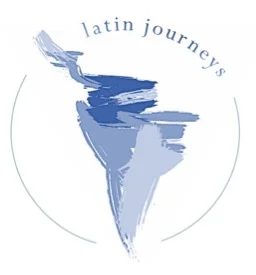Chavez's roundabout
As I discovered on a recent trip, it is hard to ignore the revolutionary and socialist spirit of Nicaragua. It flows in the people’s veins.
When you land in Managua, Nicaragua’s hot and humid capital, you do so at Augusto C. Sandino International Airport, named after the country’s national hero. Referred to as Latin America’s ‘Robin Hood’, Sandino led a revolt which ended 24 years of U.S. military occupation in 1933. As you drive into central Managua, a large statue of Sandino dominates a hill above the city centre. In the Plaza de la Revolucion, an eternal flame burns above the tomb of Carlos Fonseca, the founder of the Sandinista National Liberation Front (FSLN). The socialist movement, named after Sandino, overthrew the brutal Somoza dictatorship in 1979, and has held political power since (currently with 64% support). In Leon, Nicaragua’s second city 50 miles north of Managua, which was a hotbed of revolt during the Somoza family’s reign, you find the Museo de Revolucion and graffiti supporting Sandino and the FSLN (and mocking the U.S., one painting in particular denounced Bush). Some public buses are emblazoned with the Nicaraguan and Russian flags.
But there is another more recent (‘self-proclaimed’) revolutionary figure now overlooking Managua. That is Hugo Chavez. A large portrait of the late Venezuelan leader was revealed in 2013 and sits in the middle of a large roundabout, now called the ‘Hugo Chávez Eternal Comandante Rotonda’; it is hard to miss. The memorial depicts Chavez in military uniform (as a revolutionary), with three trees behind him (apparently symbolising the three crosses of Christ’s passion), on top of the symbol of the powerful Aztec god Quetzalcoatl (perhaps representing the divine).
Revealed to a large audience, the First Lady Rosario Murillo declared in a speech that Chavez was a “son of Simon Bolivar, our liberator… a hero of Latin America that has helped the poorest countries… and his [Chavez’s] spirit lives on in our hearts”. The crowd cheered on, wearing FSLN t-shirts. In a later ceremony, Nicaragua’s President, Daniel Ortega, praised the relationship between Nicaragua and Venezuela and lauded Chavez as being given to the world by God.
But why such devotion to Chavez? Well, obviously both countries’ governments are brothers in arms, sharing many ideals (Sandanismo being the forerunner to Chavismo). There is also First Lady Murillo’s fiery reputation as an orator, never missing an opportunity to stir a crowd. But perhaps it has more to do with the FSLN’s reliance on support from Venezuela, and its wish to keep that relationship sweet.
In 2007, Nicaragua joined Petrocaribe, part of the ‘Bolivarian Alliance for the Peoples of Our America’ (ALBA), an intergovernmental organisation set up by Chavez, which sees fourteen countries in the Caribbean receive oil from Venezuela under a concessionary financial agreement. In return, Nicaragua pays Venezuela back primarily in agricultural commodities, for example palm oil, coffee, sugar and livestock. The rest, it pays in instalments over 25 years with an interest rate lower than 1 percent. In addition, Venezuela’s government has also provided significant foreign aid and loans to Nicaragua. At its peak in 2012, Venezuelan financial aid to the country totalled $729 million.
Petrocaribe and other financial assistance has been seen my many commentators as a way of Venezuela increasing its influence over Nicaragua. But there is little complaint in the latter country, as it suits the economy. Nicaragua does very well out of it and, as a consequence, Ortega has been able to implement socialist programs and subsidise daily living expenses, for example petrol, bus fares, food imports, etc., as Chavez did during booming oil prices under his tenure to garner substantial support. Venezuelan oil also powers half of Nicaragua’s electricity.
But the Utopia is under threat. A fall in global oil prices and dire political mismanagement has put Venezuela’s economy on the precipice, and this has put the future of Petrocaribe in doubt (despite Venezuela’s reassurances). The domestic constraints faced by the government of Nicolas Maduro (the anointed successor of Chavez) could trigger a rewrite of the Petrocaribe deal, a debt recall, or even the whole agreement being scrapped. A number of experts predict ALBA will eventually collapse, unless Venezuela’s situation is remedied quickly.
This would be a disaster for Nicaragua’s economy, which has become highly dependent on Venezuela and Petrocaribe. Nicaragua’s debt to Venezuela has mounted rapidly and it would be impossible for the Central American state to settle in the short to medium term. Ricardo Hausmann, director of Harvard’s Center for International Development, and a former Venezuelan minister, told a Nicaraguan news agency in 2014 that the unravelling of Petrocaribe could “bankrupt Nicaragua”.
So does that explain Nicaragua’s homage to Chavez? With Venezuelan financial support augmenting the FSLN’s socialist programmes, which keeps the government popular and in power, and Maduro being a son of Chavez, does it come as a surprise? The FSLN knows there is a chance that the Venezuelan ‘financial-tap’ may be turned off, so keeping President Maduro happy is key to its political survival, particularly with elections in Nicaragua in November. Ortega will do what it takes, even if it means building an expensive and tacky memorial in the centre of his capital.
Two weeks ago, Maduro visited Nicaragua following an invitation from Ortega to celebrate 37 years since the FSLN’s toppling of the Somoza dictatorship. Maduro was centre stage and made a speech at the ceremony saying, “the American empire have a fatal obsession with the Bolivarian revolution”. Perhaps an obsession with maintaining the Bolivarian revolution will be a fatal mistake for Maduro and Ortega?






